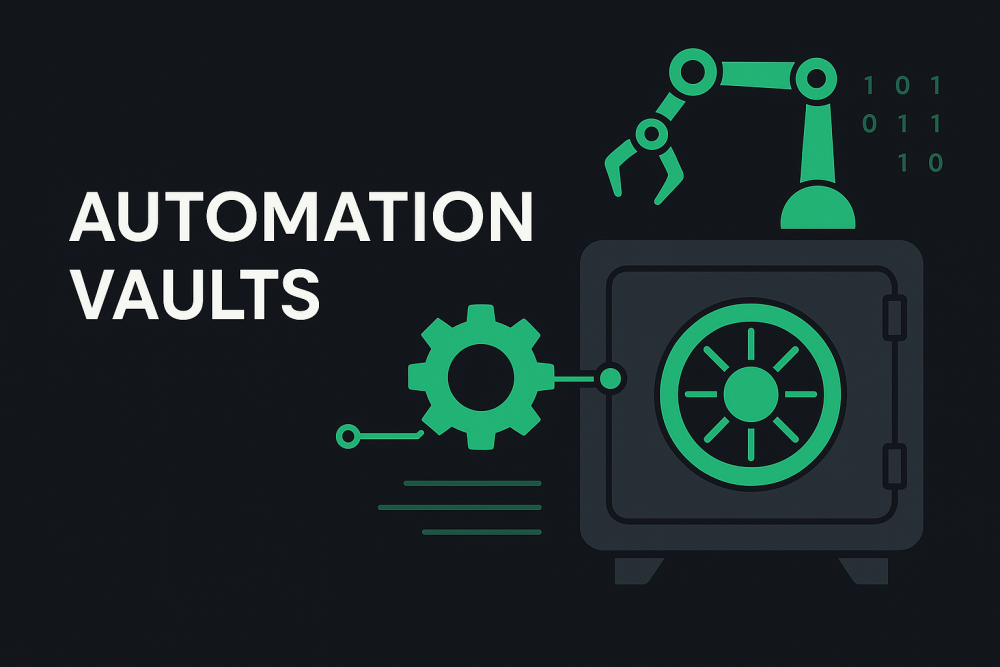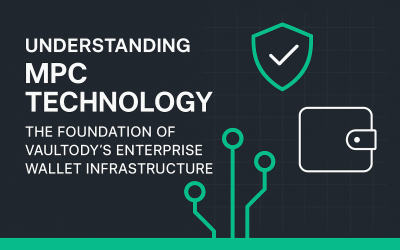Managing repetitive on-chain tasks across multiple wallet addresses can be daunting—especially in high-frequency or high-volume environments. That’s where Vaultody’s Automation Vaults excel. By integrating robust automation rules, a centralized gas tanker (station address), and advanced fee-optimization features, Automation Vaults radically transform the way businesses handle recurring blockchain transactions. This comprehensive guide reveals how Automation Vaults reduce operational overhead, eliminate wallet dust, and deliver consistently predictable transaction costs. It also pinpoints who stands to benefit most from automated workflows and why consolidating gas fees is a game-changer for high-volume operations.
1. Why Automation Vaults Matter
1.1 Tackling Complex, Repetitive Transfers
In the fast-paced world of blockchain-based transactions, many enterprises face the challenge of processing a vast number of repetitive transfers. Typical examples include regular salary disbursements, recurring supplier payments, and distribution of staking rewards. Handling each of these transfers manually can be both error-prone and time-consuming, driving up administrative costs.
Automation Vaults significantly alleviate these pain points by setting up a defined set of rules that automatically trigger transactions. This means a business can predetermine specific conditions—such as time intervals or volume thresholds—and let the system handle the repetitive process. By taking manual oversight out of routine transfers, staff can focus on higher-level tasks, thereby improving overall efficiency.
1.2 Eliminating Human Error
Manual execution of repetitive transfers is not only labor-intensive but also prone to mistakes. A simple typographical error can direct cryptocurrency to the wrong address or result in significantly higher network fees. Automation Vaults minimize these risks by standardizing the transaction process. Once the automation rules are correctly configured, every subsequent transfer follows the same secure parameters. This reduces the likelihood of costly mistakes, ensures all funds reach their intended destination, and preserves valuable administrative resources.
2. Key Feature: Comprehensive Workflow Automation
2.1 Automatic Distribution Based on Trigger Conditions
One of the core features of Automation Vaults is their ability to automatically execute transactions based on specific trigger conditions. Rather than scheduling transactions for fixed times (e.g., every Friday), the vault is configured to monitor predefined thresholds—such as wallet balance or accumulated rewards. Once the threshold is reached, a set amount of cryptocurrency is automatically distributed to designated addresses, streamlining routine processes like payouts or reward distributions without manual intervention.
2.2 Centralized Rule Management
All automation rules are centrally managed, which means updates or changes can be implemented in a single location. Once an organization decides to modify a payment schedule or alter thresholds, the updated rules propagate across all relevant addresses tied to that Automation Vault. This structure not only saves time but also ensures internal consistency and compliance with shifting operational or regulatory requirements.
3. Harnessing the Gas Tanker (Station Address)
3.1 Single Source of Fee Funding
Traditional blockchain transactions require each wallet address to have a separate allocation of cryptocurrency to pay for network (gas) fees. Over time, this model creates logistical hurdles and leads to the accumulation of small, idle balances known as “wallet dust.” Automation Vaults address this inefficiency by employing a centralized gas tanker, also referred to as the station address. This single address funds gas fees on behalf of multiple wallet addresses, vastly simplifying fee management.
3.2 Improved Predictability and Reduced Complexity
By consolidating gas expenses into one station address, businesses gain the ability to forecast and budget fees more accurately. Teams no longer need to wonder if individual addresses have sufficient funds to cover transaction costs. This improvement in predictability is especially beneficial for high-volume enterprises processing dozens—or even hundreds—of transactions daily.
4. Banishing Wallet Dust for Good
4.1 How Wallet Dust Forms
In many blockchain ecosystems, each address needs a small balance of cryptocurrency to cover the gas fees for even a single transaction. As transactions occur across numerous addresses, tiny leftover amounts—“dust”—often remain. When repeated regularly, dust accumulates and becomes uneconomical to move or consolidate because the cost of redistributing those minimal balances typically exceeds their actual value.
4.2 Dust Elimination via a Single Gas Tanker
With Automation Vaults, the station address takes full responsibility for paying transaction fees. This means individual wallet addresses do not need their own stashes of cryptocurrency just to remain operational. The result is a complete eradication of dust balances, as no separate top-up is required for each address. For businesses overseeing hundreds or thousands of addresses, the ability to do away with dust once and for all can free up resources and diminish financial losses associated with abandoned micro-balances.
5. Who Stands to Gain the Most from Automation Vaults?
5.1 Organizations with Recurring Payment Cycles
Companies that routinely disburse funds on a daily, weekly, or monthly cycle are prime candidates for Automation Vaults. Common examples include payroll services, supplier and contractor payments, or subscription-based platforms requiring periodic payouts. Once the automation rules are set, the vault manages every transaction seamlessly, freeing administrative staff from repetitive tasks.
5.2 Enterprises Scaling Rapidly
Firms undergoing rapid growth often see a surge in transactional volumes—either due to geographic expansion, new business lines, or wider customer adoption. Manual transaction handling may quickly become impractical. Automation Vaults scale effortlessly, allowing businesses to add new automation rules or addresses without introducing unnecessary administrative overhead.
5.3 Regulatory and Governance-Focused Institutions
Enterprises subject to stringent compliance and governance standards need transparent, auditable processes. By storing all transaction rules and logs in one central location, Automation Vaults facilitate thorough oversight. Approval workflows setups can be enforced before an automated schedule is finalized, ensuring robust compliance while still streamlining day-to-day operations.
6. Security Measures and Administrative Oversight
6.1 Rule-Based Authorization
Automation Vaults offer robust administrative controls. Before any rule becomes active, it can be subjected to an approval process that involves multiple stakeholders or signatories. This approach mitigates risk by preventing unauthorized schedules or triggers from executing.
6.2 Encryption and Authentication
A key principle underpinning Vaultody’s Automation Vaults is strong encryption and secure key management. Authentication protocols ensure that only authorized personnel can modify existing rules or create new ones, preserving the integrity of every automated process. Combining high-level encryption with multi-factor authentication fortifies each vault against insider threats and external attacks.
7. Automation Vaults vs. Smart Vaults
Although both vault types leverage the station address for gas fee coverage and dust elimination, their primary workflows differ:
- Automation Vaults: Built for regular, rule-based transfers that occur frequently. The vault executes transactions automatically, reducing the hands-on workload.
- Smart Vaults: Preferable for organizations managing multiple addresses that require manual control and sporadic transfers. No rules are required to initiate payments.
The choice between the two depends on whether an enterprise values hands-free, repetitive transfers (Automation Vaults) or a more flexible, ad-hoc approach (Smart Vaults). Many businesses discover that a combination of both vault types meets different operational needs within the same organization.
Conclusion
Automation Vaults are the ideal choice for enterprises that handle repetitive, high-volume blockchain transactions. By implementing intuitive automation rules, relying on a single gas tanker (station address) to fund transaction fees, and eradicating wallet dust, businesses can achieve significant cost savings and operational streamlining. Batch transactions enable up to 90% savings on network fees, while even one-off transfers benefit from advanced cost reductions of about 50%.
Beyond these tangible fee savings, Automation Vaults free organizations from the drudgery of manually executing frequent transfers. Whether it’s payroll, periodic supplier payments, or high-volume distributions to multiple beneficiaries, an automated workflow eliminates errors and ensures each transaction is executed securely and on schedule. Coupled with enhanced compliance options and robust security features, Automation Vaults deliver a powerful, scalable solution that adapts to the most demanding transactional environments.
By choosing Vaultody’s Automation Vaults, forward-thinking businesses can future-proof their blockchain operations, confident in the knowledge that they are leveraging proven, cost-efficient technology to handle their most critical financial processes.









 Copy link
Copy link